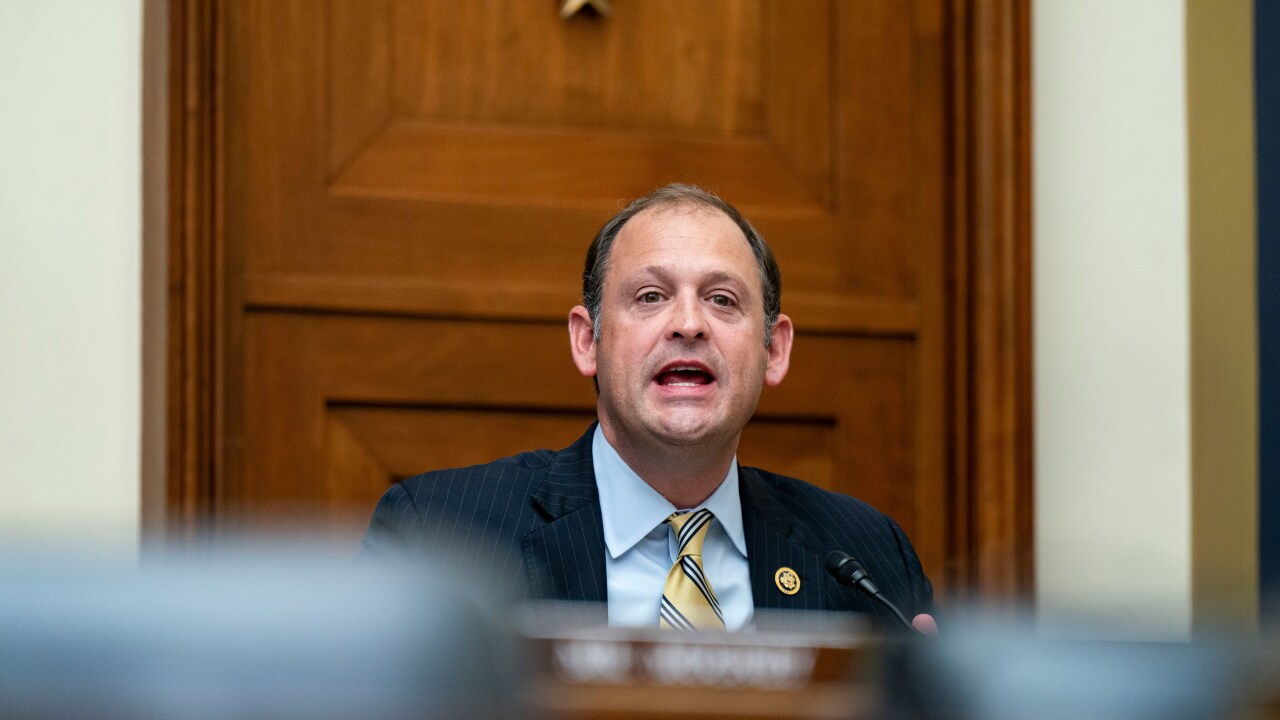Municipal bond issuance fell year-over-year for the second consecutive month as supply in September faced interrupted issuance from holiday-shortened and Federal Reserve meeting weeks, macroeconomic headwinds and a robust summer issuance period.
September volume was $44.595 billion, a 10.5% decrease from $49.839 billion last year. It was down
Issuance year-to-date is $433.422 billion, up 11.8% from $387.847 billion over the same period in 2024.
Part of the drop from August stems from two weeks that happen every September: the Labor Day holiday at the start of the month and the Federal Open Market Committee meeting mid-month.
Those were lighter weeks where some issuance was "knocked" out, said Chris Eustance, a portfolio manager at Morgan Stanley Investment Management.
When you get "live FOMC meetings," where the Fed is expected to cut, some of the issuers will pull back unless they need to come to the market, he said.
Additionally, the readout of the Fed minutes as to what the market may expect in October may have led to the fall in issuance, along with the heavy issuance in the summer months, as the narratives from the "Liberation Day: tariffs and the One Big Beautiful Bill Act played out, said Mohammed Murad, head of municipal credit research at PTAM.
Supply is expected to rebound in October, when BofA Securities estimates that issuance will reach $58 billion.
And while issuance is light this week — potentially due to last week's market weakness — there could be a "surge of deals put into the market with minimal advance notice as the forward calendar has numerous large deals that are expected to come to market in October or before the end of the year," said Pat Luby, head of municipal strategy at CreditSights.
Even with a down month, issuers' need for bond financing exists, as seen in a macro environment "congested" with economic and policy issues, Murad said.
This "may be additive to the cost of things for issuers … such as inflation and tariff effects which continue to work their way into the economy as seen by the rising costs of capital projects requiring more bonds to complete them, and state governments thinking of future budgets that can soften the approximately $911 billion impact from federal Medicaid cuts on healthcare facilities," he said.
While issuance dropped in September and may be slowing in the fourth quarter, 2025 is set to be another record year, with issuance falling somewhere in the initial range of issuance forecasts: between $525 billion to $600 billion, Paul Creedon, managing director and head of national infrastructure at Janney, said during a panel discussion at The Bond Buyer's Infrastructure conference in Boston earlier this week.
This is related to the surge in issuance across most sectors, excluding mass transit; the increase in mega deals; and concerns about the potential elimination of the tax exemption that drove issuance at the start of the year before the exemption survived the congressional reconciliation process, he said.
Additionally, there was "some of the volatility from the assertive, rapid actions of the [Trump] administration upon getting into office," so some market participants decided it was a good time to lock in their project, especially if it had some sort of federal funding component, Creedon said.
"There were a lot of drivers, maybe not the ones we thought last year … but it certainly has been an extraordinary year," he noted.
September details
Tax-exempt issuance fell 8% to $41.164 billion in 633 issues from $44.741 billion in 749 issues a year ago. Taxable issuance dropped 46.1% to $1.956 billion in 53 issues from $3.627 billion in 68 issues in 2024. AMT issuance was $1.475 billion, up just 0.3% from $1.471 billion in 2024.
New-money issuance fell 18.9% to $29.689 billion from $36.621 billion, while refundings were down 42.5% to $4.781 billion from $8.308 billion.
Revenue bond issuance dropped 15.5% to $28.17 billion from $33.331 billion in September 2024, and general obligation bond sales ticked down 0.5% to $16.425 billion from $16.508 billion in 2024.
Negotiated deal volume was down 5.5% to $37.111 billion from $39.292 billion a year prior. Competitive sales fell 17% to $7.372 billion from $8.877 billion in 2024.
Bond insurance decreased 32.4% to $2.129 billion from $3.151 billion.
Bank-qualified issuance ticked up 1.2% to $810.4 million in 184 deals from $800.7 million in 202 deals a year prior.
California claimed the top spot year-to-date among states.
Issuers in the Golden State accounted for $63.197 billion, up 11.5% year-over-year. Texas was second with $62.242 billion, up 11.2%. New York was third with $47.894 billion, up 10.2%, followed by Florida in fourth with $18.796 billion, down 16.1%, and Wisconsin in fifth with $14.952 billion, a 73.1% increase from 2024.
Rounding out the top 10: Massachusetts with $14.266 billion, up 17.1%; Pennsylvania with $12.897 billion, up 32.2%; Illinois with $11.746 billion, up 0.8% Washington with $11.331 billion, up 8.5%; and Colorado with $10.416 billion, up 26.5%.





